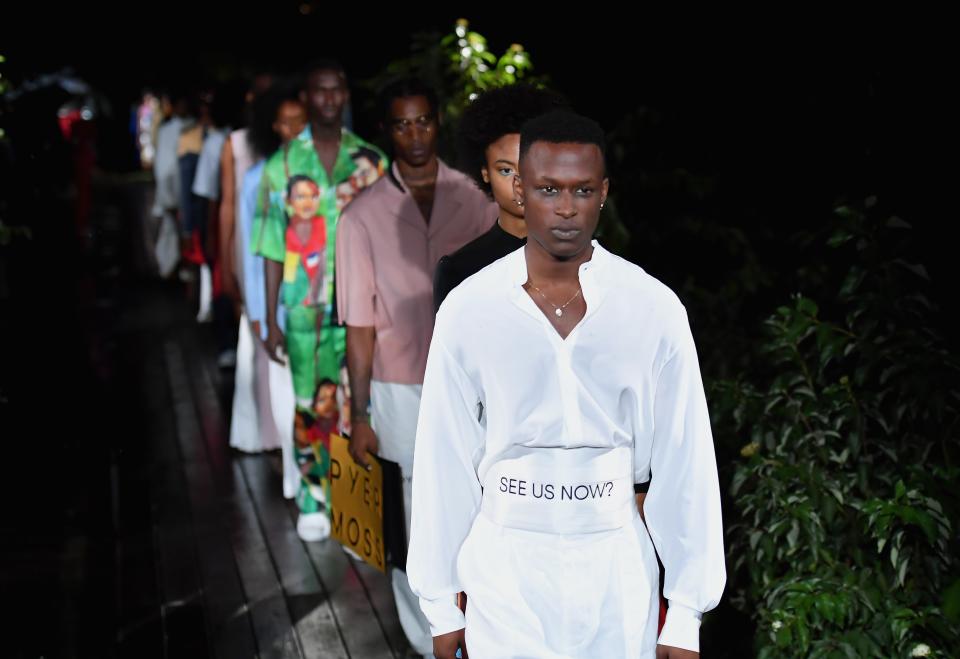What Protesting Police Brutality Is Like Around the Globe
The people marched in London and Paris, Rio de Janeiro and Rome, Nairobi and Madrid. They painted murals of his face on rubble in Idlib and on the remaining fragments of the Berlin Wall. In Auckland, they stopped to perform a Haka in solidarity. In Athens, they hurled firebombs towards the U.S. embassy.
No police killing of the Black Lives Matter era has resonated as much around the globe as the death of George Floyd. Even as a pandemic rages in every country on earth and many still remain on lockdown, protests that were initially contained to the United States’s borders have rapidly expanded thousands of miles overseas in unexpected ways. (For instance, one percent of the entire population of tiny, ethnically homogenous Iceland came out in Reykjavík.)

Graffiti of George Floyd in Berlin
In many places, the protests are meant to demand justice for Floyd, honor his memory, and denounce American police brutality, while also speaking out about the rampant racism on their own soil. In some others, the demonstrations were connected directly to that nation’s own specific history with police brutality: 20,000 took to the streets in Paris for Adama Traoré, a 24-year-old black man killed in a similar manner by French police in 2016, while people in Israel and the West Bank gathered for both Floyd and Eyad Hallak, a 32-year-old autistic Palestinian man killed last week by Israeli police.
As chants of “I can’t breathe” echo worldwide, GQ spoke to five people who have taken part in international protests about their experiences.
DUBLIN, IRELAND
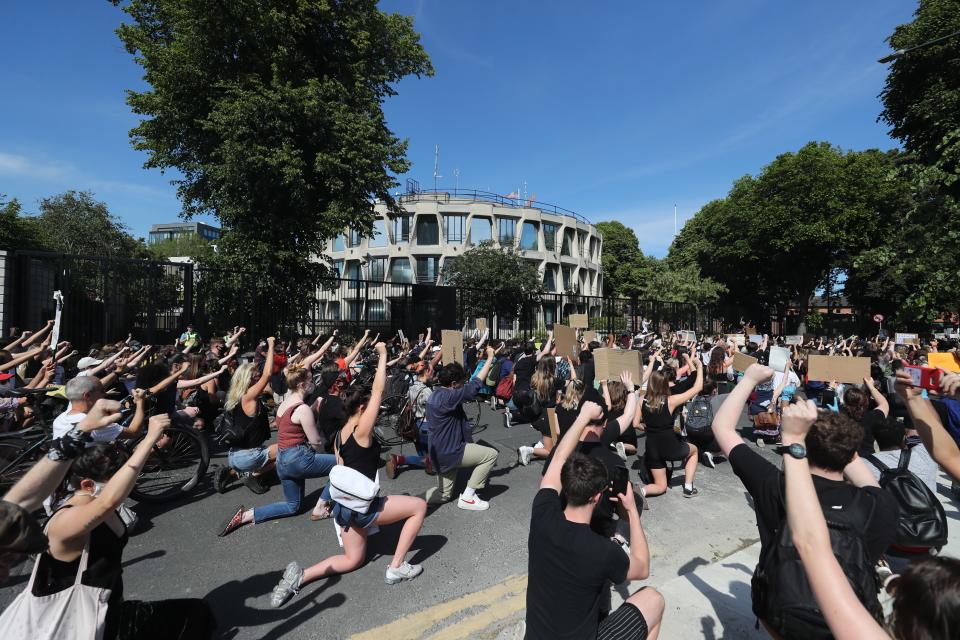
Black Lives Matter protests
Getty Images“People need to realize that it's disgusting what's going on in America, but it's also very alive on our shores too.”
I'm mixed race: half Irish and half American. My dad's from South Carolina. I live with my grandfather, who's cocooning at the moment because he's over 70. We haven't left the house since the start of March. Then the protest took place on Monday and I was like, "I can't sit at home. I have to get out and walk the walk when I talk the talk. Not only for me, but for my family.”
I saw my dad, I saw my cousins, I saw my grandmother, I saw my aunties in the same position. I can say that it's affected my family on a personal level too, because we've had two family members who were shot and killed by police.
There were roughly around 5,000 people there. We posted the photo on [social media] on Sunday and then the next day was the protest. We thought a couple of hundred people would come. But when we got there, it was just seas of people who were willing and ready to hit this on the head. It was a crazy turnout.
There are a lot of white Irish people on Twitter who don't really want to acknowledge what we're protesting for. They're like, "This only happens in America. We have nothing to worry about." People need to realize that it's disgusting what's going on in America, but it's also very alive on our shores too. I did a campaign for an Irish brand over here, the campaign was “Proudly Irish.” Somebody made a 36-minute long video trying to tell me that I cannot be Irish because obviously one of my parents is African and I will never be Irish, when Irishness is pretty much all that I've known my whole life.
I know for my dad, he was just in such disbelief when I FaceTimed him at the march, because he was like, "Wow, I came here 30-odd years ago and nobody was doing this for us back then.” My dad was a basketball player who came over here to play professionally and they were kind of looked at as celebrities because they were black and American and played basketball. I know that there are black people here who came from Africa to study during that time who weren't looked at that way. I'm also doing this for my dad because he's lived through so much history already. So has my grandmother. It's just like, "Okay, when is this actually going to get better?" My generation and the next generation, they'll have to make this better.
—Erica Cody, 24, singer-songwriter
PARIS, FRANCE
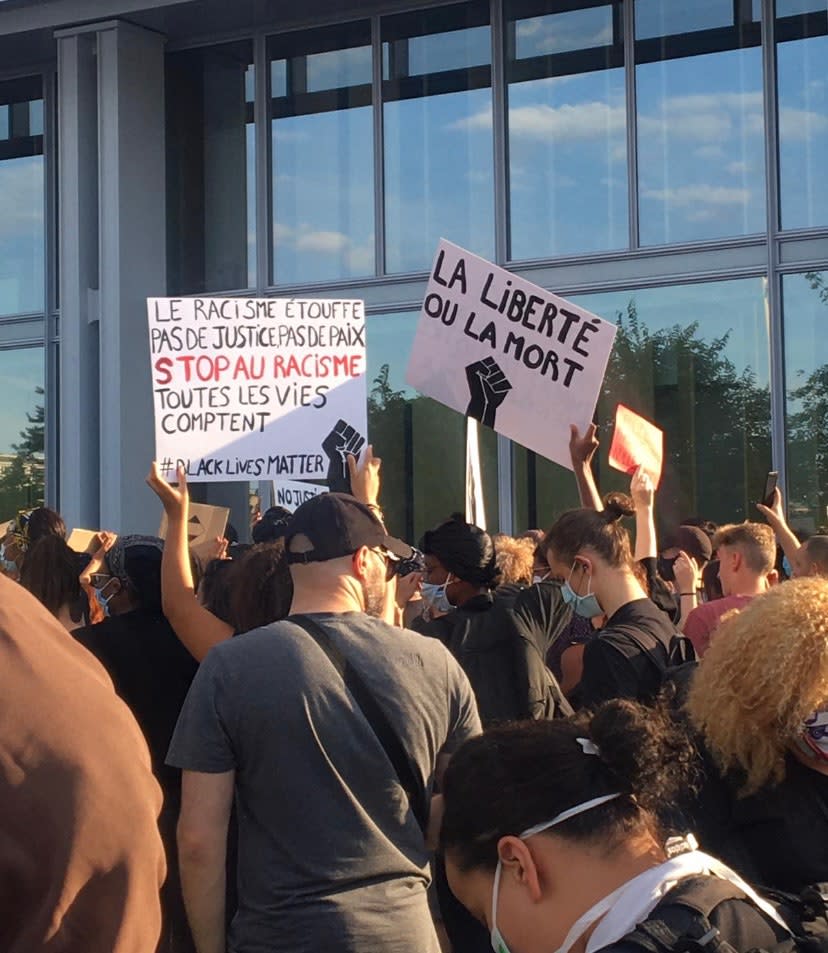
FranceProtest.jpg
Chelsea“It's a little bit depressing that these words have to keep repeating themselves. But at least now they're repeating themselves around the globe.”
People think that France is very multicultural and it is. There's a huge African population here and it's not embraced. This violence on black people, it's just history repeating itself. The protest started at the Tribunal de Paris by a woman called Assa Traoré. Her brother Adama was killed on July 19th, 2016 by four police officers. It was actually his 24th birthday and he was on a bike going to see his friends, but he didn't have his ID and not having your ID in France is illegal. They detained him, they beat him up, and they climbed on top of him. There were three officers, their total weight was 250 kgs. The entire time he was screaming that he couldn't breathe.
It's crazy to hear that George Floyd was saying those exact same words. I was there protesting in 2016. I was out there in the streets and we were screaming this in the streets—je ne peux pas respirer—and it's crazy that four years later people are saying the exact same thing all around the world. It's a little bit depressing that these words have to keep repeating themselves. But at least now they're repeating themselves around the globe.
The government did try to shut it down two hours before because of coronavirus, but everybody said, "Hell no.”
Yesterday, more than 20,000 people showed up at the protest. It was a massive crowd. Nobody expected that many people. The government did try to shut it down two hours before because of coronavirus, but everybody said, "Hell no.”
There were maybe 1,000 cops there. Throughout the evening you could tell they were bringing more reinforcements and more reinforcements. The protest ended around 1:30 in the morning, but I left at around 11:30 because that's when it started getting really violent. They were blocking people off in certain areas, trying to pressure you and intimidate you. In America, guns are legal. We didn't have to worry about getting shot or having a third party shoot us or something like that. We knew it was going to be rubber bullets, we knew it was going to be gas, we knew it was going to be intimidation. But it was mostly peaceful for a very long time.
I was watching the news when I came home and all they were showing on TV were fires. There were only two fires that were lit, but that's all they show. They didn't show the amazing speeches, they didn't show the amount of people who came to support. It's a disgrace, honestly.
—Chelsea, 24, recent master's graduate
AUCKLAND, NEW ZEALAND
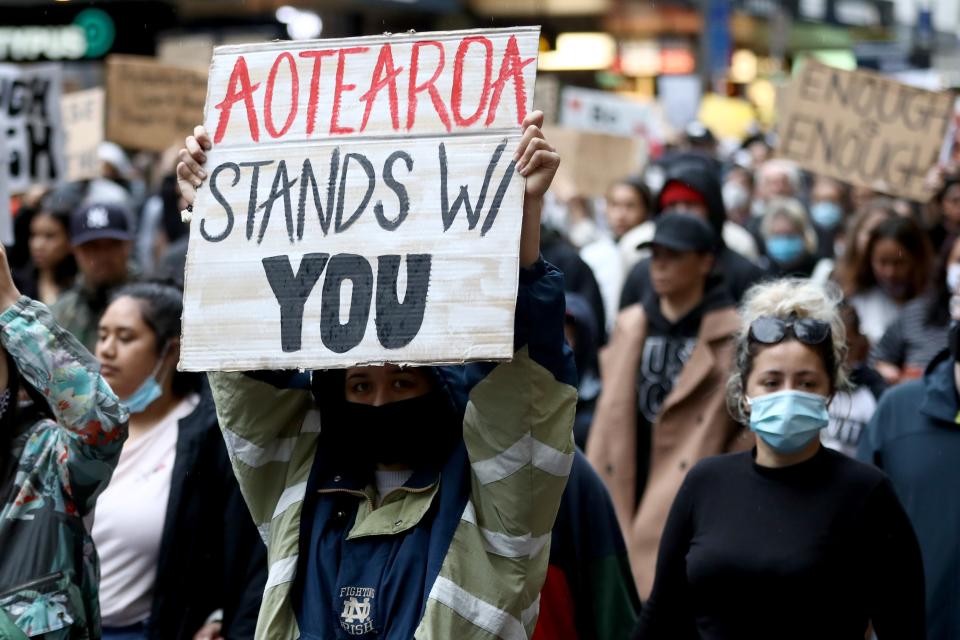
Auckland Black Lives Matter Rally Held In Solidarity With U.S. Marches
Getty Images“When the entire world is in the midst of a crisis, to see that the same old shit is still happening—it’s the straw that broke the camel's back.”
I heard between two and three thousand [people showed up]. It felt like a million when we were there. I don't think anybody was expecting the incredible turnout that came about. It started in a place called Aotea Square, where we heard from all sorts of speakers: black American citizens who are citizens of New Zealand now, from African Kiwis who have grown up experiencing really overt racism and discrimination, my friend Nate Nauer, who is Samoan man. It was a really powerful and beautiful mix of people who had really important things to say. And then the protest itself went down to the U.S. embassy right down the main street of Auckland.
With George Floyd in particular, the power of pictures is really hard to argue with. This time, when the entire world is in the midst of a crisis, to see that the same old shit is still happening—it’s the straw that broke the camel's back.
I have probably been guilty of thinking that indigenous people, people of color, and black people are almost interchangeable. While so many of our stories sound the same and have the same quality of injustice and discrimination, we are different. But when I think about the fact that Māori people in New Zealand have had wars brought upon them, have been enslaved and had culture ripped away from them and that we're still fighting the same sort of systemic injustice here in New Zealand that lots of black people in America are fighting, it hurts differently. It feels real and it feels visceral. So I think that's why a lot of Māori people here are connecting with that story.
I think the Haka is just the most beautiful, powerful thing. When I see Haka and when I hear Haka, it's just instant goosebumps. It’s this experience of connecting with those who've gone before us, our ancestors, and you sort of feel as if it is not just the people in front of you who are making that sound, you get this real sense of everyone that's come before them. It’s about celebration. It's about pain. It's about throwing down a challenge. I'm so pleased that people are seeing it and hearing it for what it is.
— Kanoa Lloyd, 33, broadcast journalist
MADRID, SPAIN
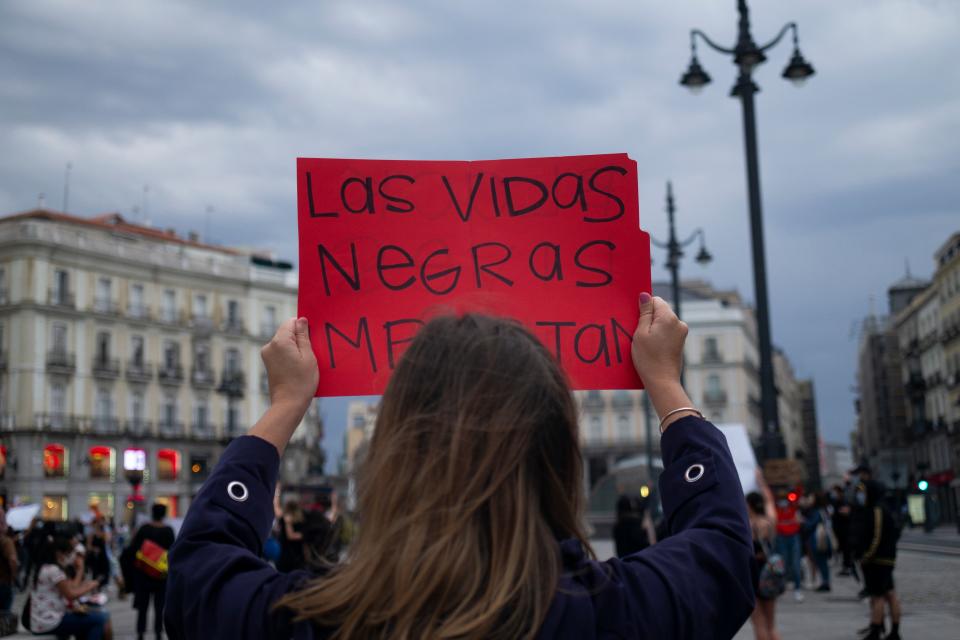
George Floyd Protest In Madrid
Getty Images“This is a shared feeling of hurt.”
We had a protest in Madrid on Sunday. We tried to keep it mum at first, because here you need a permit. We dressed in all black, we had signs. Our group specifically went and put armbands on honoring the names of people that had passed. We did groups of 10 to social distance. Also, one of the rules here is that if you're going to go out and be in public, then you could only be in a group of 10 people max.
What happened that was really magical was, we planned for just our 10. We have a group out here called SOS Racismo Madrid. We were standing there in silence, they're on another side chanting, screaming. We did a die-in as well. Then they asked me to speak and then they spoke in Spanish as well. One thing we were chanting, it was all in Spanish: "Breonna Taylor, Ahmaud Arbery, George Floyd, we won't forget you."
Having an American passport here is kind of having a golden ticket. Unfortunately that's not the same for some black people here in Madrid. We feel that way back at home about our police, but they feel the same way here in Madrid where there's a lot of undocumented citizens. Or if they are documented, they are kind of berated on a daily basis.
This was done in an era where everything is able to be recorded. This time it was the actual image of this man, the life leaving his eyes, the words he was saying, the cop looking straight into the camera and people begging for him to stop. People who said they don't see the difference in color before, and they don't see why black people in the States are still talking about slavery and oppression, they were able to see it then. They were able to have it right in front of their face. It's unfortunate that it took this long for people to maybe get on our side, but it's meant to change the world now. Hopefully people will start listening.
—Maya Balfour, 26, teacher
REYKJAVÍK, ICELAND

“This is nothing new, so maybe we're re-evaluating society and what matters.”
Iceland is a really homogenous nation, but it's slowly changing. I see myself as an Icelander, but people would come up to me and ask me where I'm from and I would be like, "I'm from Breiðholt.” They're like, "No, I mean where are you really from?" Then I would be like, "I'm really from here" and they're like, "No, it can't be true."
We met in front of the Parliament yesterday. We're just coming out of this COVID restriction on gatherings, so this was the first gathering in a long time that was so big. We weren't quite sure how it was going to turn out, because now you're only allowed to have a gathering for 200 people. [Ed. Note: Over 3,000 people are reported to have shown up according to Icelandic state TV.] There were six of us speaking. At the end, a black singer approached us at the stage and he wanted to end it with a song. It was so beautiful.
I remember when I was walking towards the space and I saw two police officers, a man and woman, walking towards the gathering and instantly I was like "Why are they here? Why do they need to be here?" I know that it would probably be okay, but I got this uncomfortable feeling. It turned out okay and they ended up posting on Facebook with a message, “let's show solidarity.” I think it had some mixed responses. People were like, "This is awesome. This is great. This is so important," and some people were like, "This isn't about you.”
I've been asking myself this question. "Why now, why is everyone so ready to do this now?" It must be something with the coronavirus. That has reflected how the inequalities, like economics and highly structured racism, affect black people more. A lot of people have been confined to their home and we're going through a really strange stage as a society, so I don't know if we're feeling more compassion. People are irritated, but at the same time feeling more love towards everyone and more understanding because we value things more. This is nothing new, so maybe we're re-evaluating society and what matters.
—Sanna Magdalena Mörtudóttir, 28, city councillor and leader of the Socialist party in Reykjavík
GQ Recommends
Spend with intent.
Originally Appeared on GQ

